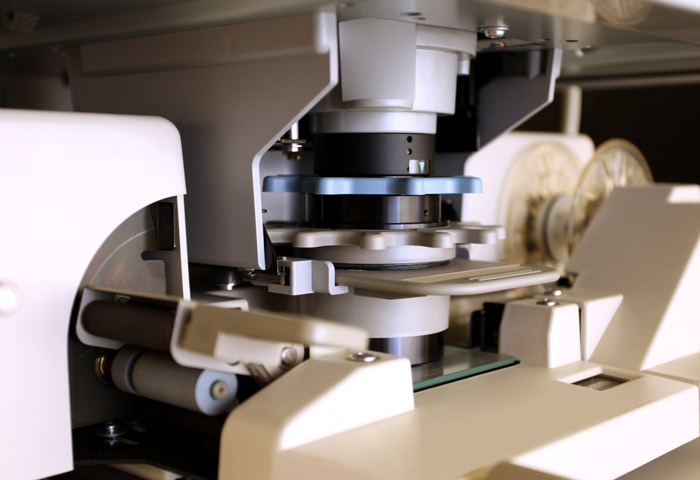For most of the twentieth century, microfiche and microfilm were the preferred methods used to store images, blueprints, schematics, maps, and other important documents for extended periods of time.
At the peak of its popularity, there was no other format with the same versatility or longevity.
Microform technology made it possible to reduce documents on paper to a fraction of the size of the original, helping large businesses,banks, libraries, national archives, and government institutions to store large volumes of data at a reduced cost when compared to paper storage.
Microfilm also lasts much longer than paper, up to 500 years in perfect conditions, and is resilient against damage and deterioration when handling, making it a great way to preserve important information for the long term with a reduced risk of data loss.
For these reasons, it’s not uncommon for microform archives to contain critical information that must be preserved and protected for years to come.
While microforms still have a number of advantages, they also lack many of the conveniences that come along with digital storage, including text search capabilities, secure remote access to your data from anywhere you can access to the internet, and a near infinite storage capacity.
This is why many organizations find it beneficial to create digital copies of their microfilm and microfiche data. Digitizing microfilm improves the accessibility of your stored documents and enables you to store a backup of your data in the cloud that can be used to recover your data in the case of a catastrophe.
What is microfiche?
Microfiche is a thin transparent photographic film used for storing documents in a miniaturized form. Typically stored as 105mm by 148mm sheets, microfiche cards generally consist of 60 or 90 document images per sheet. These images are reduced to 1/25th the size of the original document, making microfiche considerably more efficient from a space saving perspective when compared to paper.

Microfiche images are too small to read with the naked eye, so microfiche readers are used to magnify and project the images onto a screen where the contents of the documents can be viewed more easily.
Microfiche can still be found in abundance today, as historically it has been a popular choice for libraries and other government agencies that store large volumes of data. Historical documents, old books, newspapers and magazines are commonly stored for archival purposes on microfiche.
What is the best way to digitize microfiche and microfilm?
Scanning microfiche correctly requires special equipment, expertise, and experience, especially in high volumes.
In order to get the most out of your digitized microfiche data, it is important that the digital reproductions maintain their original readability and clarity, so strict quality assurance protocols are needed throughout the process.
You also need to be sure that the resulting digital images are indexed and categorized in a way that makes accessing your data easy and efficient. To do so, accurately transferring key identifiers such as the text from the microfiche title area, roll and frame numbers, or even data extracted from the images into image metadata is critical.
If it sounds like a complicated process, well, it is!
Don’t worry, hiring a professional microfiche/microfilm scanning company like SecureScan will take the stress and guesswork out of the process. We have the ability to convert your microfilm archive into a variety of popular image digital formats for use in your current cloud storage system. If you don’t have a storage system in place, we can set it up for you. We even provide the option to receive your files on an encrypted USB thumbnail drive depending on your preferences.
Why should I digitize my microfiche and microfilm?
There are a number of benefits that can be gained by converting a microfilm archive into a digital file-store. Below are 3 of the most important reasons to switch.
Save Space
Microfilm quickly gained popularity due to its ability to store thousands of documents in a relatively small amount of space. A single roll of microfilm can hold up to 2500 images/documents for example, the equivalent of an entire filing cabinet drawer stuffed full of paper documents.
As compact as microfilm and microfiche is, it can be difficult to store. You need a dry temperature controlled environment to prevent damage, and you must ensure there are no outside factors present like high acidity levels to ensure that stored film does not start to decay. That requires you to set aside special space in your facility, 100% dedicated to film storage.
On the other hand, digital storage allows you to store hundreds of thousands of documents on a single hard drive or remotely in a cloud storage facility, making it possible to free up space and reduce the associated costs, or allocate it for other more useful purposes.
Aside from storing the film itself, you need to set aside space for microfilm machines to access your data, which are bulky, cumbersome, and increasingly hard to come by.
Accessing digital files only requires the basic hardware already present in any business location, a computer and internet access. No extra space or clutter required.
Save money
It won’t be long after your decision to scan your microfilm documents when you’ll see a return on your investment. Everyone has heard the saying “time is money” before, well, that’s true, especially when you are talking about your labor force.
Accessing digital files via text based searches makes finding a single document in an archive of millions of files near instantaneous. No more rummaging through boxes or microfiche storage to find the image you need. The improvements to efficiency and productivity for your team will quickly add up in reduced labor costs over time.
Digital storage has also become incredibly affordable in recent years. One of the most popular cloud based storage solutions in the world, Amazon allows you to store a gigabyte of data for only $0.004 per month. To give you an idea about how affordable that really is, take a single-page high-resolution document for example, with the average file size of 150 to 600 kb. You could store more than 10,000 of them for less than half a cent per month. Good luck finding physical storage space at those rates.
Lastly, you can completely eliminate the additional training and time consuming protocols required when relying on a microfilm archive. No more training or carefully monitored handling, no more expensive equipment to maintain and use.
No special equipment or requirements
Microfiche and microfilm require reader printers to magnify the miniaturized contents for viewing. These devices are extremely expensive to purchase, maintain, and repair, which is why so many government offices are digitally scanning their film and fiche collections.
Improved Accessibility
Most large microfilm archives are highly organized and extremely well kept, and they have to be. Locating a single image out of thousands is difficult enough even in the most perfect of circumstances.
You need to know exactly where it is, go right to it and locate it immediately, and return to your reader if you want to be efficient. But this level of organization is fragile, all it takes is to misplace a single item, and someone will end up combing through your entire film library to find it next time.
With digital files, its possible to type in the name of the file, an ID number, film and frame numbers, or any other data you have stored along with your image and retrieve it instantly. This makes finding what you need a cinch.
Digitizing your film also takes away the restriction of only being able to access your data from one place, by one person at a time. Digital files can be shared, emailed, and accessed by as many or few people as you see fit, making it incredibly convenient for multiple teams to share the same data, regardless of physical location.
What steps should you take before you start scanning your microfiche?
Once you have made the decision to digitize your microfiche, there are a few steps you can take to better prepare for your project. Planning ahead of time makes your project easier in the long run, and can help you avoid ugly surprises during the process.
Step 1. Estimate the volume of microfiche you need to scan
It’s important for almost every aspect of planning for your project that you have a general idea about the volume and contents of your microfiche library.
A ballpark estimate of what needs to be scanned can help you set reasonable expectations for both the total cost and the amount of time needed to complete your microfiche scanning project. It’s ok if you are unsure about the exact number of images you need to scan.
Step 2. Assess the condition of your microfiche
The clarity and readability of a scanned image is limited by the quality of the source material.
Before you start scanning your microfiche, sample a few random images to get a sense of how well they are holding up. Microfiche has a long shelf life when stored in the proper conditions and is generally quite resilient otherwise, so a spot check is really all that is necessary. Look for deterioration, discoloration, or water damage which could lead to unexpected challenges down the road.
Step 3. Understand the end goal
How do you plan to use your digitized images after your project is complete?
In some cases, microfiche is scanned for backup/archival purposes, requiring only digitization and storage. Alternatively, you may need to perform OCR to extract important data from the images to be stored in text form, integrated with a document management system of your choosing.
Understanding the use cases for your data can help you make sensible choices when planning your microfiche scanning project and help you avoid unnecessary costs.
Step 4. Set Your Budget
Speaking of costs, you should set a budget for your project and stick with it. Be sure to leave a little wiggle room, especially if you’ve made guesses about the volume you have to scan, just in case your estimate was incorrect.
It is not always feasible to complete large scanning projects all in one shot. For this reason, organizations with a lot to scan on a limited budget tend to complete the scanning process in multiple phases, splitting the project into several smaller, more digestible projects.
Spreading out your project over a longer period of time is a great way to reduce the financial impact of digitizing massive microfiche libraries.
Step 5. Prioritize your microfiche
There are a number of different ways you can approach your scanning project depending on your needs, and the requirements for each business are unique.
Some organizations prefer to scan documents needed in the immediate future into digital formats first, leaving unused or archived data for later. Others may want to eliminate archived materials first, saving the most important images for last.
That really is up to the business to decide. Be sure to communicate these priorities to everyone involved with your project.
What comes next?
Now that you know the tremendous benefits of digitizing your microfilm/microfiche, your next step is to request a scanning quote from one of our microfilm experts. Not only will you get an obligation free cost estimate for your project, it is a great time to ask any questions you have about the process and get more information about our company to help you make the decision that works best for your data storage needs.
